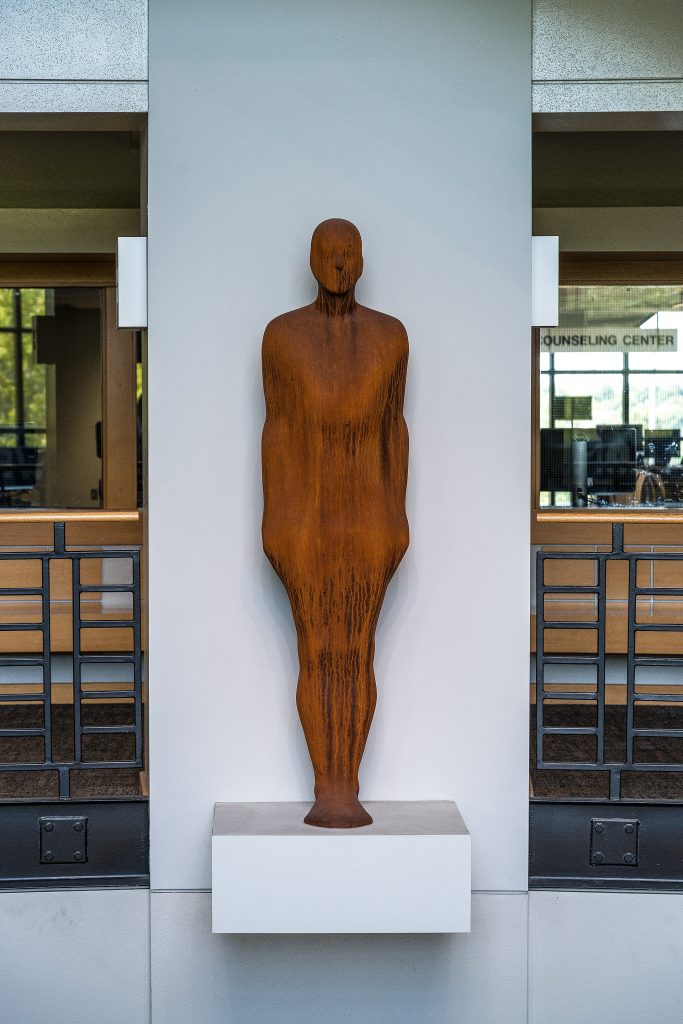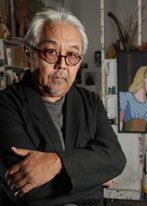
Roger Shimomura, American Infamy, 2006, Acrylic on canvas panels, 61.62 x 100.5″, Collection Nerman Museum of Contemporary Art, 2006.15, Acquired with funds provided by JCCC and Marti and Tony Oppenheimer and the Oppenheimer Brothers Foundation
During World War II, the United States government placed into incarceration camps some 110,000 Japanese Americans living along the West Coast. Among them was the Seattle-born Roger Shimomura, whose earliest childhood memories were formed in the Minidoka concentration camp in southern Idaho, where he was sent with his family. Since the late 1970s Shimomura has made hundreds of paintings and prints reflecting on his experience of incarceration, working in a flat, cool style influenced by both American pop art and Japanese ukiyo-e woodblock prints. American Infamy, from Shimomura’s Minidoka on My Mind series, presents a wide-angle view of the incarceration camp, spread across four vertical panels like a Japanese folding screen and viewed from a traditional Japanese bird’s-eye perspective, as if to emphasize the government’s conception of the incarcerees as essentially Japanese despite their American ways and citizenship. The composition offers numerous colorful glimpses of daily life in the camp, including women doing laundry, a girl jumping rope and people lined up outside the bathroom. These are overshadowed, however, by the ominous black silhouette of an armed guard wielding binoculars at the left, and by the dark clouds that obscure the composition’s base and several parts of the scene above, clearly signaling Shimomura’s critical view of this unjust incarceration.
Roger Shimomura earned his BA from the University of Washington in 1961 and his MFA from Syracuse University in 1969. Shimomura is also a respected printmaker, and JCCC owns several of his prints which are on view in the Carlsen Center’s Works on Paper focus area.
— David Cateforis, 2012








